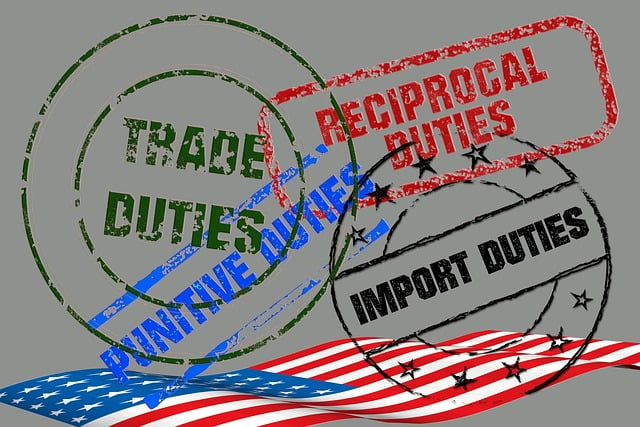Case Study: A Side Hustle Success Story Navigating Tariff Challenges

The Impact Of Tariffs On US Ecoomy
Did you know that nearly 50% of Americans have a side hustle? That’s right! In a world where the 9-to-5 grind often feels like a hamster wheel, many are finding creative ways to supplement their income. But what happens when your side hustle runs headfirst into the brick wall of tariffs? Let’s dive into a fascinating case study of a side hustle that not only survived but thrived amidst tariff challenges.
Meet the Entrepreneur: Sarah’s Crafty Corner
Sarah is a crafty soul with a passion for handmade jewelry. She started her side hustle, Sarah’s Crafty Corner, while working full-time as a graphic designer. Her unique pieces quickly gained traction on platforms like Etsy. But then, the unexpected happened: tariffs on imported materials began to rise. Suddenly, her cost of goods skyrocketed, and her profit margins began to shrink faster than a wool sweater in hot water.
Understanding the Tariff Landscape
Tariffs are taxes imposed on imported goods. They can turn a thriving business into a financial tightrope act. For Sarah, the tariffs on metals and beads from overseas meant she had to rethink her entire supply chain. Here’s what she discovered:
- Cost Analysis: Sarah realized she needed to calculate the new costs of her materials. This meant diving deep into her expenses and understanding how tariffs affected her bottom line.
- Supplier Relationships: She reached out to her suppliers to negotiate better rates or find alternative sources. Building strong relationships can lead to better deals.
- Market Research: Sarah explored local suppliers. While they were sometimes pricier, the benefits of supporting local businesses and reducing shipping costs were worth considering.
Pivoting Strategies: Adapting to Change
When life gives you tariffs, make lemonade—or in Sarah’s case, pivot! Here’s how she adapted her business model:
- Product Diversification: Sarah introduced a new line of jewelry using locally sourced materials. This not only reduced her reliance on imports but also appealed to eco-conscious consumers.
- Pricing Strategy: She adjusted her pricing to reflect the increased costs. Instead of shying away from higher prices, she emphasized the quality and uniqueness of her products.
- Marketing Shift: Sarah launched a marketing campaign highlighting her commitment to local sourcing. This resonated with her audience and attracted new customers who valued sustainability.
Leveraging Technology for Success
In the digital age, technology can be a game-changer. Sarah harnessed various tools to streamline her operations:
- Inventory Management Software: This helped her track materials and costs in real-time, making it easier to adjust her pricing and inventory levels.
- Social Media Marketing: Sarah utilized platforms like Instagram and Pinterest to showcase her new products. Engaging visuals and storytelling helped her connect with her audience.
- E-commerce Optimization: She revamped her Etsy shop with better SEO practices, ensuring her products appeared in more searches. This increased her visibility and sales.
Community Engagement: Building a Support Network
Sarah didn’t just go it alone. She tapped into her local community for support. Here’s how:
- Networking Events: Attending local craft fairs and business meetups allowed her to connect with other entrepreneurs facing similar challenges.
- Online Forums: Joining groups on social media provided a platform for sharing experiences and strategies. The power of community can’t be underestimated!
- Collaborations: Partnering with other local artisans for joint promotions helped expand her reach and share resources.
Lessons Learned: What Sarah Wants You to Know
After navigating the choppy waters of tariffs, Sarah emerged stronger and wiser. Here are her top takeaways for anyone facing similar challenges:
- Stay Informed: Keep up with tariff changes and market trends. Knowledge is power!
- Be Flexible: Adaptability is key. Don’t be afraid to pivot your business model when necessary.
- Embrace Local: Supporting local suppliers can reduce costs and build community ties.
- Engage Your Audience: Transparency about challenges can foster loyalty among customers.
Final Summary
Sarah’s journey through the tariff maze is a testament to resilience and creativity. By adapting her strategies, leveraging technology, and engaging with her community, she turned a potential disaster into a success story. So, if you find yourself facing tariff challenges in your side hustle, remember: with a little ingenuity and a lot of heart, you can navigate any storm! 🚀



